This article is sponsored by NETGEAR.
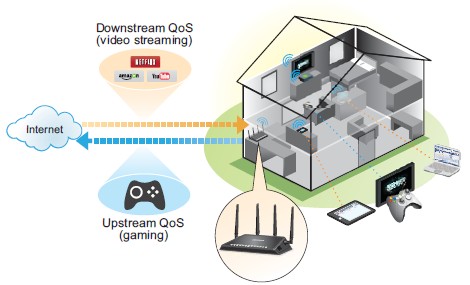
NETGEAR Dynamic QoS
Anyone with a Wi-Fi router knows the pain of too many devices competing for too little bandwidth. A typical home scenario might include Netflix streamed on the large living room HDTV, a few Skype, Facetime or other video chat sessions running on smartphones or tablets while a heated game of Team Fortress is played with a live audio link to other team members. In most households, this scene is likely to have at least one person yelling for someone else to get off the internet! The challenge is then deciding how to diagnose and fix the problem.
To address this problem, most routers today come with some form of Quality of Service (QoS), also known as bandwidth control, device / application priority or bandwidth shaping. No matter what it’s called, QoS’ job is to manage access to the router’s internet bandwidth, which often is smaller than needed to supply all devices with the bandwidth they require.
To complicate the challenge, user bandwidth requirements are constantly changing with the mix of active internet-based activities. Email, web browsing, social media applications, gaming and music and video streaming all have very different bandwidth demands. Multiply those demands by the combinations used by each person connected to the home router and the result is often unhappy users.
Most QoS approaches require assigning priority or allocating bandwidth to each device. But these assignments are static and don’t reflect real life where device and application mix frequently changes. Who wants to keep logging into the family router to change settings to keep everyone happy?
Dynamic QoS
Dynamic Quality of Service (QoS) is a unique feature on NETGEAR Nighthawk family routers. It dynamically allocates upstream and downstream bandwidth to traffic streams based on application and device type to ensure users get the bandwidth they need.
The feature is found on the Dynamic QoS page of R7500, R7800, R8000 and R8500 Nighthawk routers. You have the option of running a built-in speed test to determine your internet connection performance, or manually entering download and upload throughput.
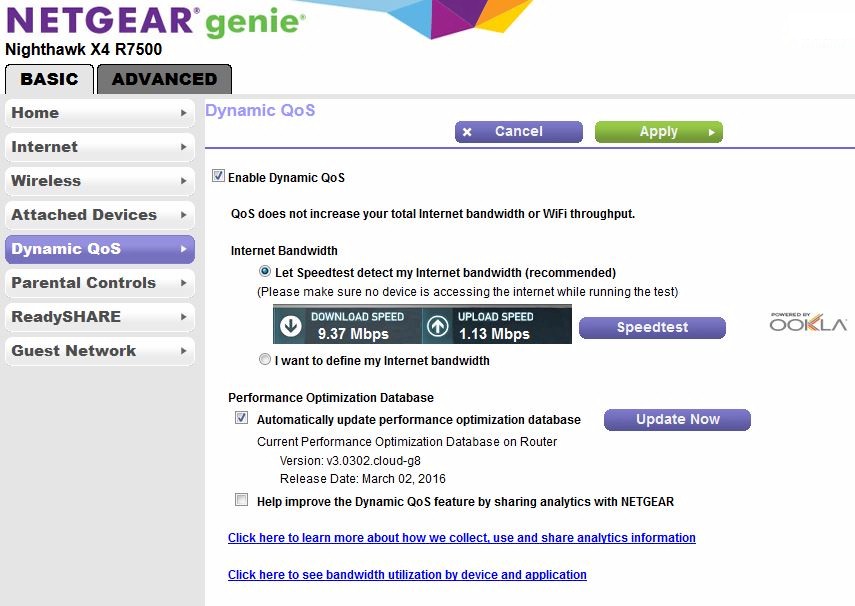
NETGEAR Dynamic QoS controls
Once enabled, Dynamic QoS can be monitored and controlled via the Attached Devices page. The view shows each device, its assigned priority, connection type, name, and download and upload speed.
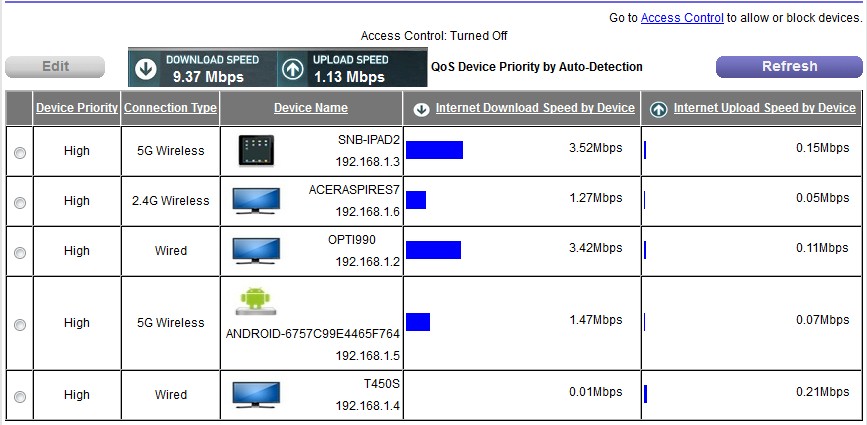
NETGEAR Dynamic QoS devices view
Clicking on a device shows a breakdown of bandwidth use by application. This PC was simultaneously downloading a large file from a browser link and playing YouTube in another browser tab. The page with the download link was also playing a video ad.
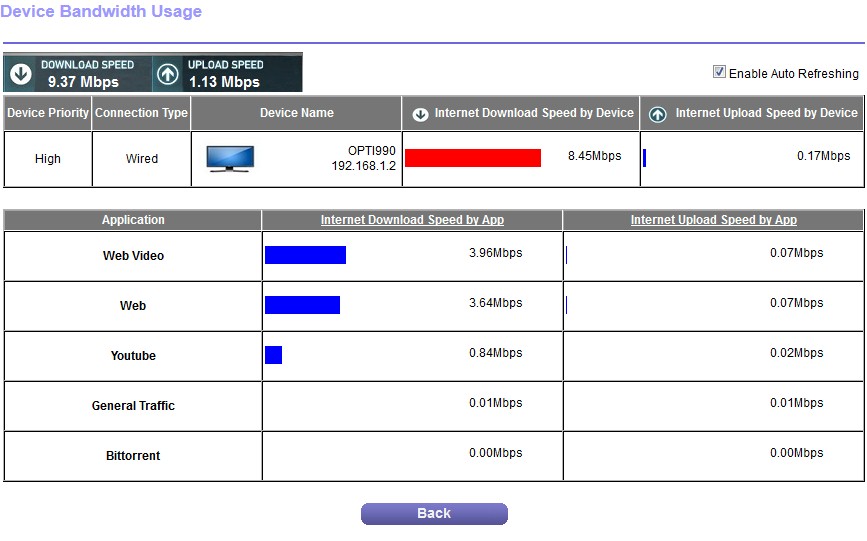
NETGEAR Dynamic QoS device application view
Devices can be renamed and assigned different device type icons. Device priority can also be changed from the default High, to Highest, Medium or Low.
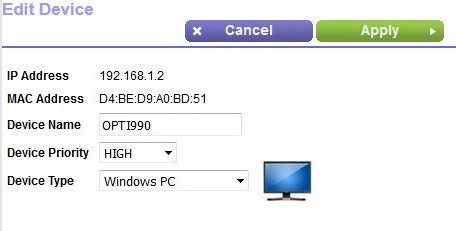
NETGEAR Dynamic QoS device edit
Plots of device and application bandwidth use are available in the iOS and Android Genie apps.
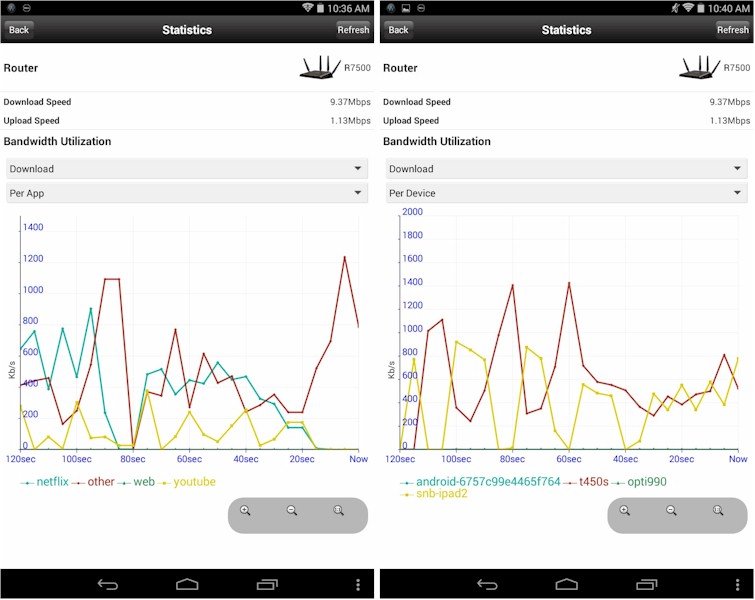
NETGEAR Dynamic QoS bandwidth use over time
A similar view is also available by right-clicking on the router icon in the Windows app Network Map and selecting Statistics.
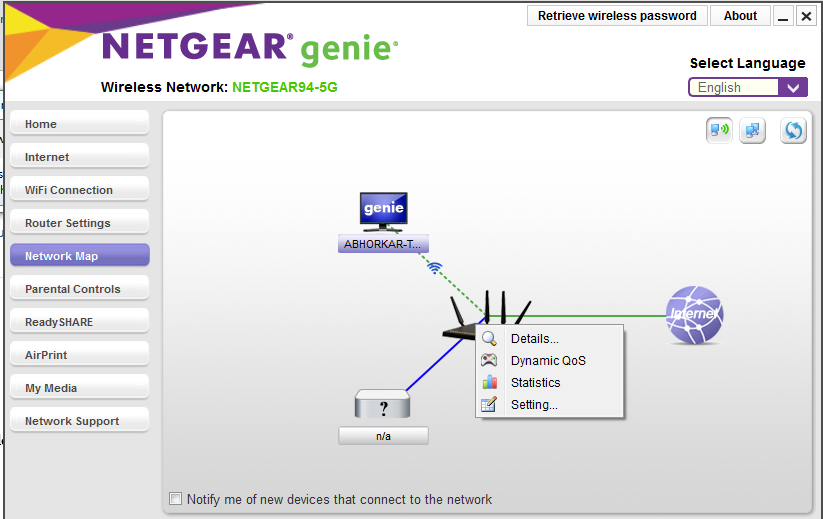
NETGEAR Dynamic QoS statistics – Windows app
Dynamic QoS recognizes hundreds of devices and applications and can tell the difference between adaptive streaming services like Netflix and buffered ones like YouTube. This database is automatically updated with new device and application behavior profiles or can be updated on demand.

NETGEAR Dynamic QoS Performance Optimization Database control
Dynamic QoS also recognizes communication services using low bandwidth but requiring low latency like Skype, FaceTime and VoIP telephone and online games and takes into account connection type (Ethernet or Wi-Fi).
These critical applications are automatically given higher priority when they’re active. But when they’re not, bandwidth is automatically given back to less time-critical things like photo uploads, web browsing and email.
Is It Working?
If you want to see how well your current router’s QoS solution works, here are some tips for checking it out.
Note! Many QoS solutions require knowing your internet connection’s actual up and download speeds. If you can enter these values manually, try entering abnormally low numbers. Limiting download throughput to around 3 Mbps and upload to around 300 Kbps will reduce the number of simultaneous devices you’ll have to use to stress your connection.
Ping / latency: Many online games have optional displays that show real-time ping stats. You can also try DSLreports’ Jitter/Ping Test.
Video streaming: Netflix’ Example Short 23.976 test clip displays resolution in real time. Because Netflix uses adaptive bit-rate streaming, it adjusts the resolution of the video depending on the bandwidth available to the Netflix application.
Run a few HD or 4K YouTube videos at the same time
and monitor the Example Short screen.
When testing, simply run each test with and without QoS enabled. Try a few different application and device mixes to really put your router to the test. Running a large download or Torrent session along with either of the above tests is also a good way to quickly load up your internet connection.
Check out this NETGEAR Knowledge Base article to learn how to configure Dynamic QoS on your NETGEAR Nighthawk X4, X4S, X6, or X8 routers.
And don’t forget to download the genie app for Windows, MacOS, iOS and Android mobile devices to explore all the features genie offers, including WiFi Analytics, Media streaming, traffic metering and more!

 Read more about NETGEAR.
Read more about NETGEAR.